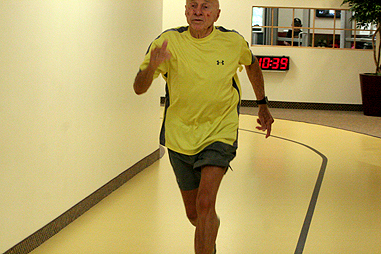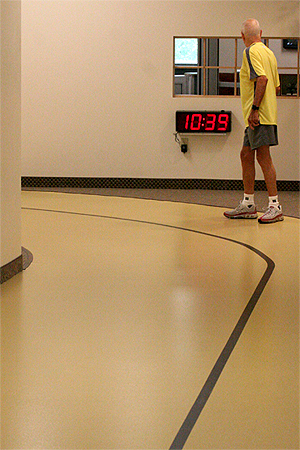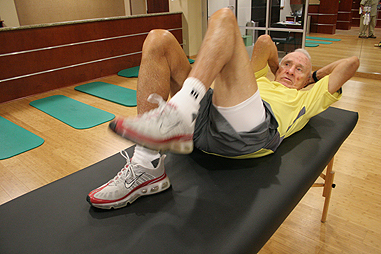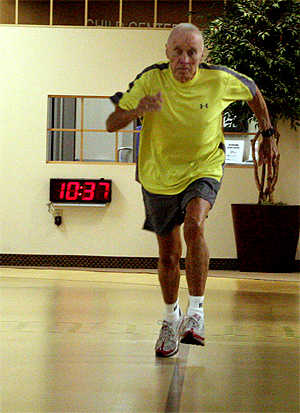Russ Lofgren grips a stopwatch with his finger on the start button. His eyes are on the display. “Go!” he shouts, initiating a training sprint on an indoor track.
It’s a Thursday morning in late July, and the runner, Jim Hammond of Maple Grove, Minn., leaps from the start line in a burst of energy. His feet pound the track, arms pumping, hands open and karate-chopping air for 100 meters on a straightaway before skidding to a stop around a bend.
Hammond huffs, paused for a moment before he begins to walk. He rounds the track and waits for the signal from Lofgren, his assistant, to start again.

And he’s off!
As nonagenarian workout routines go, Hammond’s sprint sessions might seem extreme: He runs five days a week, pounding out sprints and endurance runs up to 1.5 miles long. He lifts weights and works through aerobic routines, an hour on an elliptical machine each Saturday capping a week of workouts. “That elliptical is the hardest,” said Hammond, who turned 94 years old this past spring.
Born in 1914, and living the retired life since the mid-1970s, Hammond falls into the unlikeliest of demographics to be consumed in athletics. But for the past eight years, ever since he entered a competition called the Georgia Golden Olympics on a whim, Hammond has pursued a passion to be the fastest grandpa on the planet.
Indeed, running multiple events in the Senior Olympics Hammond has won more than a dozen gold medals since 2001. He has set records for his age class, running 100 meters in 18.09 seconds and 200 meters in 42.35 seconds. “I’m going for world records next year,” he said, referring to the National Senior Games to be held in San Francisco August 1 – 15, 2009.
He’ll be 95 when his flight lands next summer at San Francisco International, track shoes and running shorts in tow.
The Running Life
In pursuit of running records, Hammond said sprinting has changed his life. A widower who is legally blind, Hammond lives alone in an apartment. But his connection to the outside world has grown each year with his involvement in sports.
In addition to his daily training at a health club, Hammond travels to multiple races a year. He has an assistant — Russ Lofgren, a friend from his church — and a personal trainer who designs workout regimens. At home, he reads email from running friends with the font so enlarged that each word takes up almost a quarter of the screen. “This is my connection to the world,” he said while booting a program to reveal a dozen unread messages.

Hammond waits for the clock before starting a training sprint










